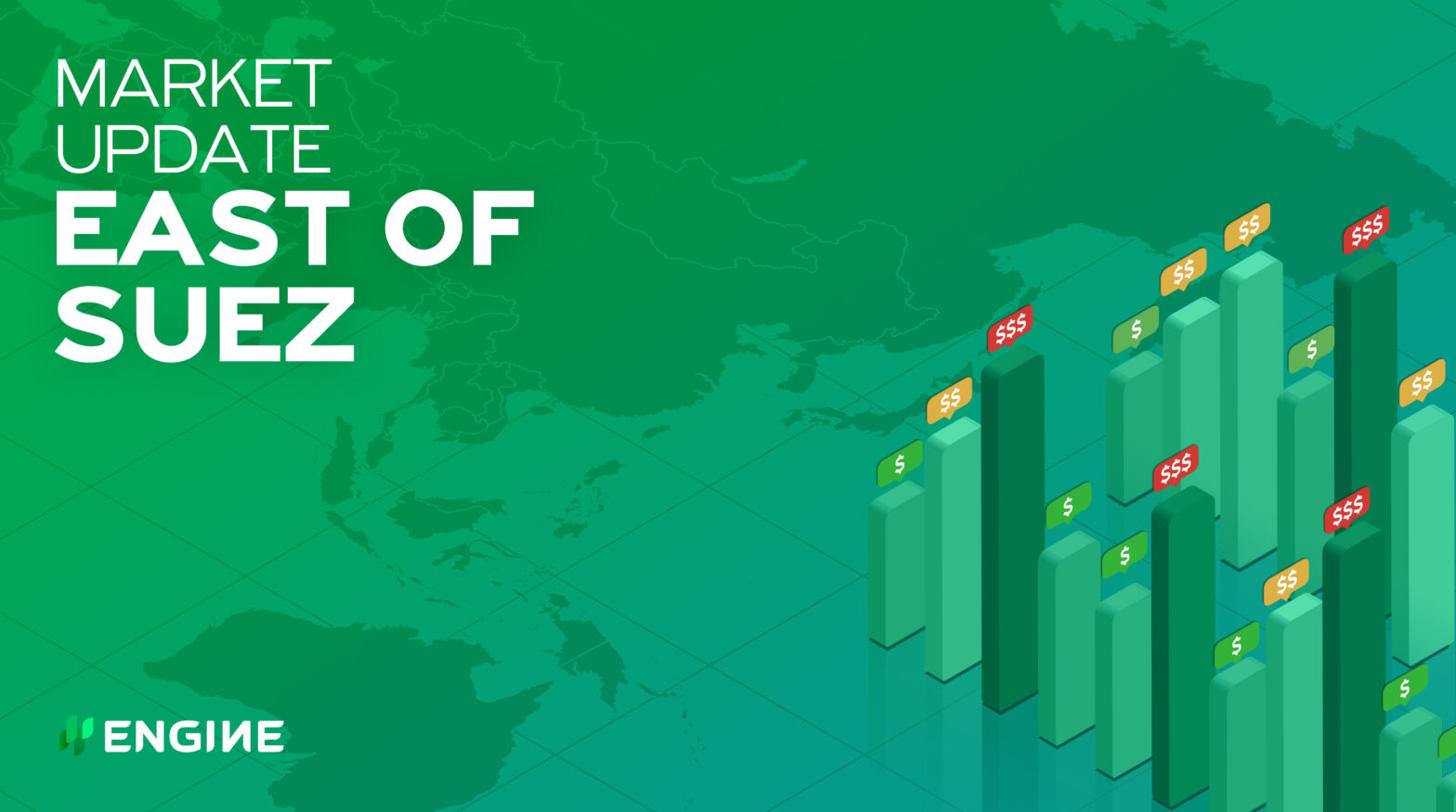East of Suez fuel prices are sharply down on the day, tracking lower Brent as it dips below $80/bbl for the first time in over a month.
Changes on the day to 16.00 SGT (08.00 GMT)
VLSFO prices down in Singapore ($19/mt), Fujairah ($17/mt) and Zhoushan ($16/mt)
LSMGO prices down in Fujairah and Zhoushan ($25) and Singapore ($18)
HSFO380 prices down in Fujairah ($17/mt) and Singapore ($10/mt)
Bad weather is expected in Japan from next Monday, which could potentially affect bunkering at anchorage, according to a source.
Strong winds are also forecast in South Korea next week, with the brunt of the storm expected to hit ports on its western coast, like Incheon. The country’s ports were recently hit by gale-force winds, which led to suspension of bunkering operations and delivery backlogs.
VLSFO and LSMGO supply has tightened in South Korea’s southern ports, pushing lead times to 6-9 days.
Lead times have steadied in Singapore recently, standing at 11 days, compared to a shorter eight days recommended in Fujairah.
VLSFO supply is expected to improve in Zhoushan as one supplier is expected to replenish cargo today, a source has said. Two more suppliers are offering HSFO380 in the Chinese port now, while another supplier expects to receive a cargo by 21 November.
Brent
Front-month ICE Brent has shed $2.78/bbl in the past day, to $79.30/bbl at 16.00 SGT (08.00 GMT).
The futures contract has slumped below the $80/bbl mark for the first time since early October, under pressure from a burgeoning US-led emergency crude supply coalition, and the threat of a new Covid-19 wave in Europe.
US President Joe Biden has asked big Asian oil consumers China, India, South Korea and Japan to release oil from their strategic backup reserves in a joint effort to keep a lid on prices.
China says it is willing to release some crude, Reuters reports, while Japan and South Korea have so far been more hesitant. Discussions are ongoing.
The countries’ consumers have felt the pinch at the fuel pump in recent months, prompting government officials to voice concerns towards OPEC+, which holds the most sway over global supply and key oil price benchmarks.
The US in particular urged OPEC+ to pump more oil in the lead-up to the group’s last monthly meeting, when it stuck to its path of limiting incremental monthly output increases to 400,000 b/d also for December.
US gasoline prices have gained more than 60% in the past year, adding inflationary pressure to its wider economy. President Biden has mulled measures to rein in prices and now views a concerted output boost from big non-OPEC+ countries as the most viable option.
Brent is also under pressure from a recent spike in new Covid-19 cases across mainland Europe. Fuel demand prospects could weaken if another round of restrictions are put in place.
